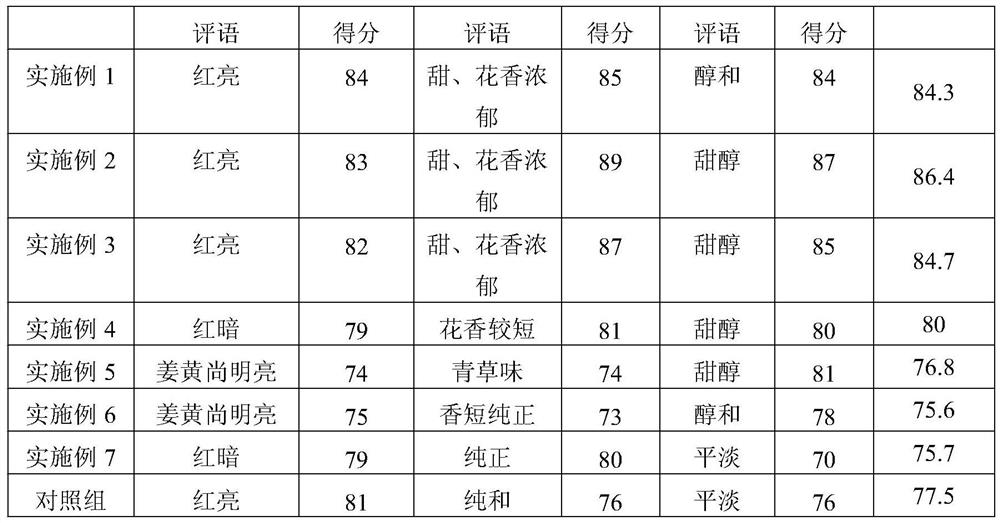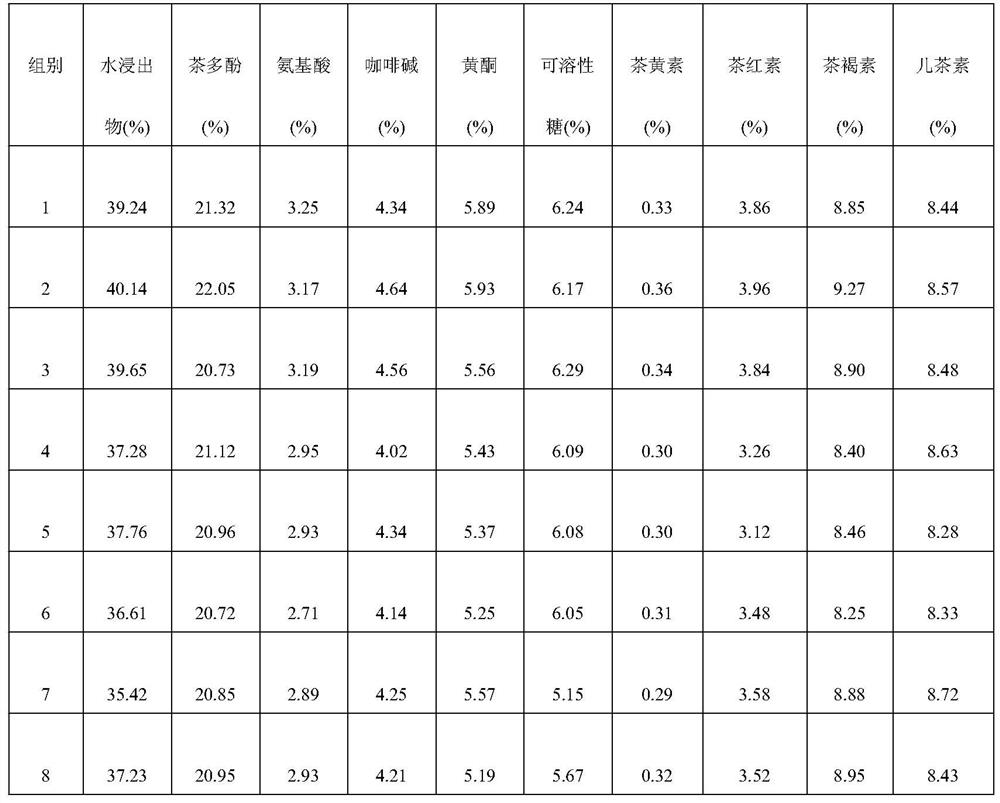A kind of processing method of black tea
A processing method and technology of black tea, applied in the field of tea beverages, can solve problems such as lack of improvement, black tea soup color, aroma, taste and nutritional value are difficult to meet the needs of consumers, etc., to achieve the goal of improving aroma, promoting biochemical reactions, and improving fermentation efficiency Effect
- Summary
- Abstract
- Description
- Claims
- Application Information
AI Technical Summary
Problems solved by technology
Method used
Image
Examples
Embodiment 1
[0026] A processing method for black tea, comprising the following steps:
[0027] 1) Material selection: fresh leaves with one bud and one leaf or one bud and two leaves are taken as raw materials;
[0028] 2) Withering: After airing at 16:30-17:00, spread the tea leaves on the withering tank with a thickness of 10 cm, blow hot air at 28°C, and wither for 5 hours;
[0029] 3) freeze-drying: freeze-drying the tea leaves obtained in step 2);
[0030] 4) mixing: mixing the tea leaves obtained in step 3) with solution 1, the water content of the tea leaves is 67%;
[0031] 5) kneading: kneading temperature is 25 ℃, relative humidity is 85%%;
[0032] 6) fermentation: fermented liquid and tealeaves are mixed by mass ratio 1:50, carry out fermentation;
[0033] 7) Drying: bake at 115°C until the moisture content of the tea leaves is 30%, let cool at 30°C for 2 minutes, dry at 75°C until the moisture content of the tea leaves is 10%, and dry at 55°C until the moisture content of ...
Embodiment 2
[0044] A processing method for black tea, comprising the following steps:
[0045] 1) Material selection: fresh leaves with one bud and one leaf or one bud and two leaves are taken as raw materials;
[0046] 2) Withering: After airing at 16:30-17:00, spread the tea leaves on the withering tank with a thickness of 12cm, blow hot air at 30°C, and wither for 5.6 hours;
[0047] 3) freeze-drying: freeze-drying the tea leaves obtained in step 2);
[0048] 4) mixing: mixing the tea leaves obtained in step 3) with solution 1, the water content of the tea leaves is 70%;
[0049] 5) kneading: kneading temperature is 27 ℃, relative humidity is 90%;
[0050] 6) Fermentation: Fermentation liquid and tealeaves are mixed by mass ratio 1:60, carry out fermentation;
[0051] 7) Drying: bake at 117°C until the moisture content of the tea leaves is 35%, let cool at 31°C for 2.3 minutes, dry at 77°C until the moisture content of the tea leaves is 10%, and dry at 57°C until the moisture conten...
Embodiment 3
[0062] A processing method for black tea, comprising the following steps:
[0063] 1) Material selection: fresh leaves with one bud and one leaf or one bud and two leaves are taken as raw materials;
[0064] 2) Withering: After airing at 16:30-17:00, spread the tea leaves on the withering tank with a thickness of 13 cm, blow hot air at 33°C, and wither for 6 hours;
[0065] 3) freeze-drying: freeze-drying the tea leaves obtained in step 2);
[0066] 4) mixing: mixing the tea leaves obtained in step 3) with solution 1, the water content of the tea leaves is 73%;
[0067] 5) kneading: kneading temperature is 30 ℃, relative humidity is 95%;
[0068] 6) Fermentation: Fermentation liquid and tealeaves are mixed by mass ratio 1:70, carry out fermentation;
[0069] 7) Drying: bake at 120°C until the water content of the tea leaves is 40%, let cool at 33°C for 3 minutes, dry at 80°C until the water content of the tea leaves is 10%, and dry at 60°C until the water content of the tea...
PUM
 Login to View More
Login to View More Abstract
Description
Claims
Application Information
 Login to View More
Login to View More - R&D
- Intellectual Property
- Life Sciences
- Materials
- Tech Scout
- Unparalleled Data Quality
- Higher Quality Content
- 60% Fewer Hallucinations
Browse by: Latest US Patents, China's latest patents, Technical Efficacy Thesaurus, Application Domain, Technology Topic, Popular Technical Reports.
© 2025 PatSnap. All rights reserved.Legal|Privacy policy|Modern Slavery Act Transparency Statement|Sitemap|About US| Contact US: help@patsnap.com



